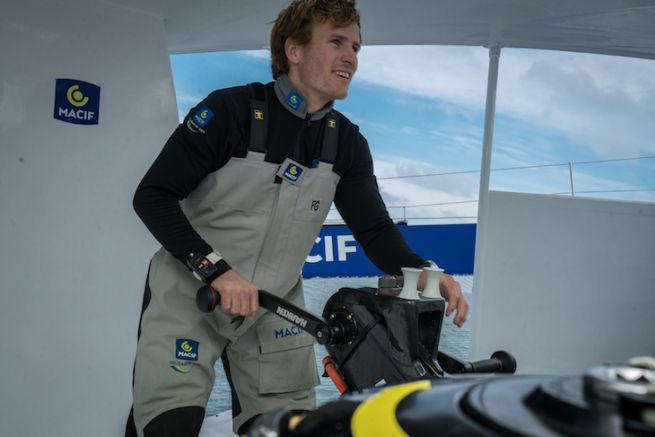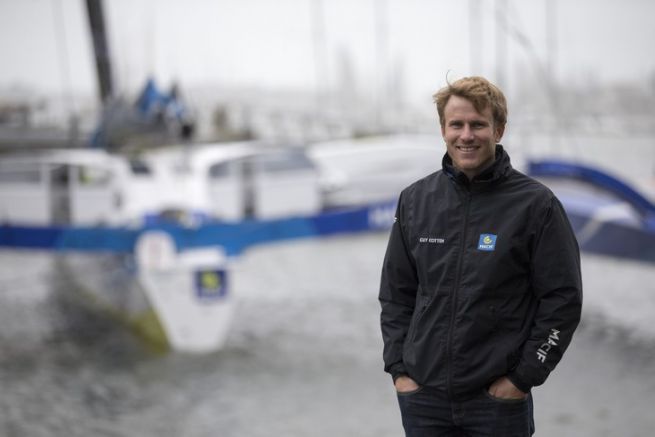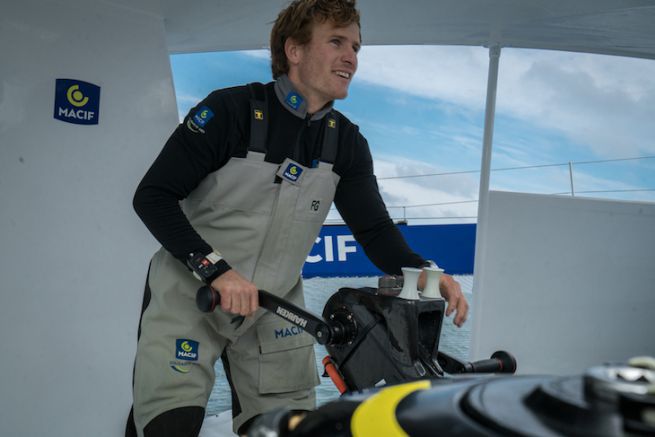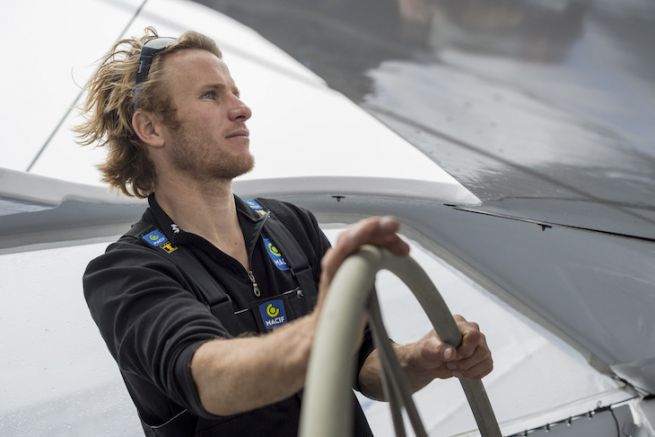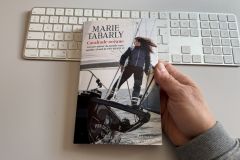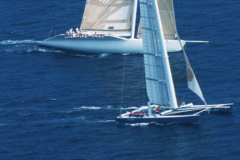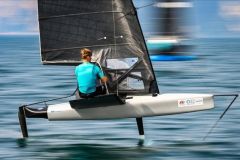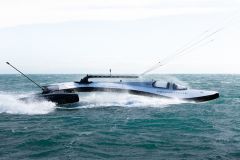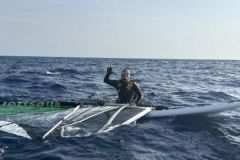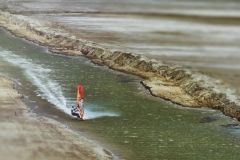Promising beginnings
It was during the 2012-2013 Vendée Globe, an edition won by François Gabart, that the idea of a single-handed round the world multihull race was born. This idea was made possible with the construction of the trimaran Macif, launched in August 2015. After two years of taking charge and numerous victories: Transat Jacques Vabre 2015, Transat bakerly 2016 and The Bridge, François Gabart feels ready for his new objective.
"When I was seven years old for my first Optimist regatta, I had to go around a buoy at 400 metres, it was a challenge that corresponded to my abilities at the time. My challenge today, at 34 years old, is to sail around the world single-handed on a multihull. I have the same values and the same ambition" explains the sailor.
Stand-by from 22 October 2017
François Gabart will go on stand-by on 22 October 2017 to attempt to break the solo round-the-world record. He will have to try to do better than the incredible performance of Thomas Coville in 49 days, 03 hours 07 minutes and 38 seconds, established on 25 December 2016, an "extraordinary" reference time according to François Gabart. But also quite a challenge, as he explains.
"On the one hand, it's the same thing, the idea is always to go as far as possible in the sporting approach and forget about the stopwatch a bit. On the other hand, it's a game changer, as the record is harder to beat, but it made me want to go even more. To get there, I'll have to try what I've never done before, I'll have to go to my limits in terms of performance and probably discomfort, without ever compromising my safety. That's what's at stake in this round-the-world tour and it's exciting. ...] It's necessary to be aware of the danger and not to underestimate the difficulty of the exercise, but the desire is stronger than the apprehension. I can't wait to set off, I'm dreaming of long tacks all by myself on this boat. With my team, we've done everything to be able to take up this challenge. It's time to go!" explains skipper Macif.
After his experience on The Bridge, of which he finished first, François Gabart knows that the challenge is difficult, but not impossible, and that he will have to go as fast single-handed as he did with a crew. To date, only three sailors have achieved this feat: Francis Joyon, Ellen MacArthur and Thomas Coville.
This choice on 22nd October was carefully considered by François Gabart and the weather cell, headed by Jean-Yves Bernot, with whom the skipper has been working with confidence for several years. "The aim is to find the best compromise between having the best possible chance of breaking the record, the need not to leave too early to avoid strong and dangerous lows in the south during the southern spring, but also the need not to delay the start too late."
The stand-by period will last about 3 months and François Gabart hopes to have a good weather window to start. The departure date will be a joint decision between the router and the sailor. Thereafter, the skipper Macif will take part in the Route du Rhum 2018 and the solo round-the-world race in 2019. Races "that will require major modifications to the boat next winter."
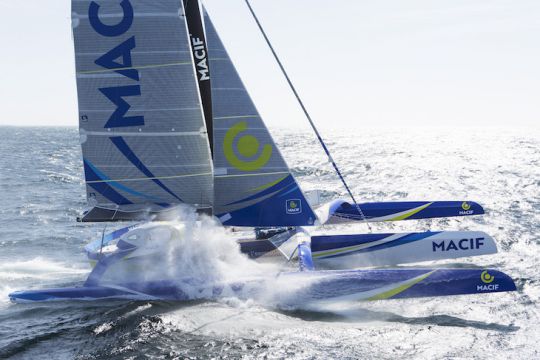
Intensive preparation
For his challenge, François Gabart left nothing to chance. He trained physically all summer long and sailed a lot on his M24, a small trimaran laboratory for the technical team. Since the end of August, he alternates navihgations at sea aboard the trimaran Macif and technical preparation on land. " The aim is to sail as much as possible single-handed in strong winds, so that I become familiar with high speeds. I'm also going to look at all the elements that could break down in order to be able to make repairs at sea. I need to be as autonomous as possible on the boat" says the sailor.
A high-performance boat
On her return from New York last July, after The Bridge, the Macif trimaran was not taken out of the water, but underwent a complete overhaul in her home port of Port-la-Forêt: dismantling, checking and reassembling many parts, but also some reinforcements on the right and left to prevent wear.
"I've come to a good use of the boat's potential: I understand it well, I feel it well, I feel ready to go around the planet. Her ability to go fast for a long time in a lot of different conditions makes her a healthy, versatile and safe boat. Even when I push the machine to the maximum, I feel a certain peace of mind" continues the skipper, for whom safety is the basis of performance.
